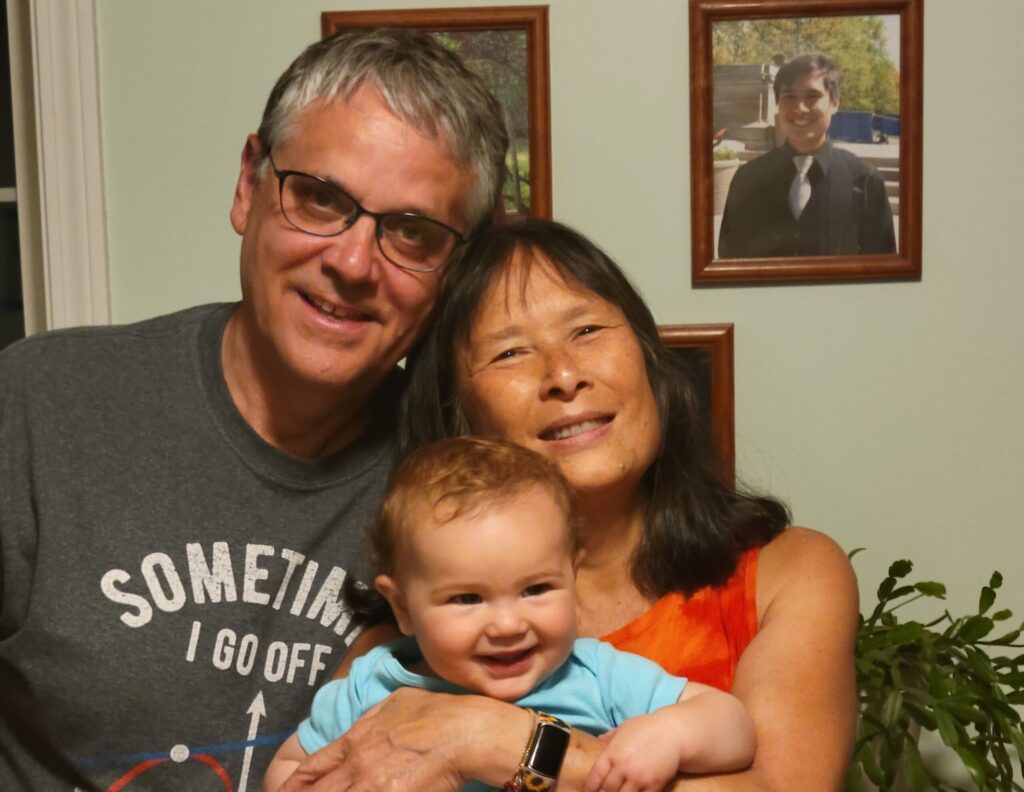From Maine to Boston, Via New Hampshire: Mel Morse’s LifeFlight Story
This story appeared in the Spring 2024 issue of Dispatches.
In an emergency, a strong and well-designed system saves lives. Much of the work happens behind the scenes long before an emergency call comes in, coordinating among services — EMS, fire, police, hospitals, and 911 dispatchers — so that when the need does arise, the necessary resources can be deployed quickly and efficiently.
For Melody Morse, the system worked, and a year after a serious medical emergency that required a LifeFlight transport, she is back in her South Berwick classroom where she loves to be, teaching her fifth-grade students.
In December 2022, Mel was driving home from an appointment when she experienced a flash of intense pain. “I was alone in the car,” she said, “and all of a sudden, I got this intense, and I do mean intense, jaw pain. Then it shot through my body to my legs, and my legs went numb.” As the pain began to subside, unsure what to do next but knowing it was unsafe for her to continue driving, she pulled over to the side of the road and called her adult son. “I told my son that he needed to make the decision for me, because I felt mostly fine by then, but I still felt like something was wrong.”
Her son called 911, and the emergency medical dispatcher sent an ambulance immediately. “By the time they got there,” Mel recalled, “I felt perfectly fine, and I said, ‘Oh I don’t think I need an ambulance. I don’t need to go to the hospital.’ They convinced me otherwise. I joked with the EMT all the way.”

The ambulance took her to the nearest hospital, which was Wentworth-Douglass Hospital across the state line in Dover, New Hampshire. She checked into the emergency room, and the doctor ordered a CT scan. “I was in there literally for a minute or two, and I was wheeled really quickly back to my room. I said, ‘well, that was really fast.’ And he said, ‘Yes, we need to go really fast.’”
The doctor requested an air medical transport because Mel needed to get to a hospital equipped for advanced cardio-vascular surgery, and quickly. LifeFlight 4, which is based at Sanford Seacoast Regional Airport in Sanford, Maine, responded.
The LifeFlight 4 crew flew Mel from Dover, New Hampshire, to Massachusetts General Hospital in Boston. “They got me there,” Mel said. She doesn’t recall her flight — which she regrets, because she would love to remember riding in a helicopter — but she knows she might not be teaching today if not for the LifeFlight crew. “I don’t know who they are, but I seriously think they’re part of the angels that saved my life that night.”
She was diagnosed with an aortic dissection, a life-threatening cardio-vascular condition. She underwent nearly 12 hours of surgery and was placed on three separate heart and lung machines, “They explained that I only had a 30 percent chance of survival, but here I am. I was back at work full time three months later.” Seven months later, she completed her first hike up Mt. Major in New Hampshire. Mel is still regaining her strength. She is an avid hiker on local trails and would like to be back out there more. “I’m working toward that,” she explained, “and I thank LifeFlight for being part of my team.”
Collaboration Across Northern New England
LifeFlight of Maine is the only dedicated air medical provider in the State of Maine. New Hampshire has Dartmouth Hitchcock Advanced Response Team (DHART). Massachusetts has Boston MedFlight, UMass Life Flight, and LIFE STAR. All five of these services are part of North East Air Alliance Critical Care Transport System (NEAA), and this system is designed to deliver critical care to the point of need as quickly and efficiently as possible. These services communicate regularly, so that their response in an emergency is well-coordinated. In October 2023, for example, teams from Boston MedFlight, UMass Life Flight, and DHART responded within minutes after receiving a call for assistance from LifeFlight of Maine after the shooting in Lewiston.
LifeFlight of Maine transports about 2,500 patients each year. Most of those transports originate in Maine, but not all. As an independent, nonprofit critical care provider and a member of the NEAA, LifeFlight is committed to being there when needed. In 2023, 96 LifeFlight of Maine transports originated in New Hampshire, and in each case the patient was transported to the nearest medical facility capable of providing the necessary level of care, whether that facility was in Boston, Bangor, Portland, Portsmouth, or elsewhere.

